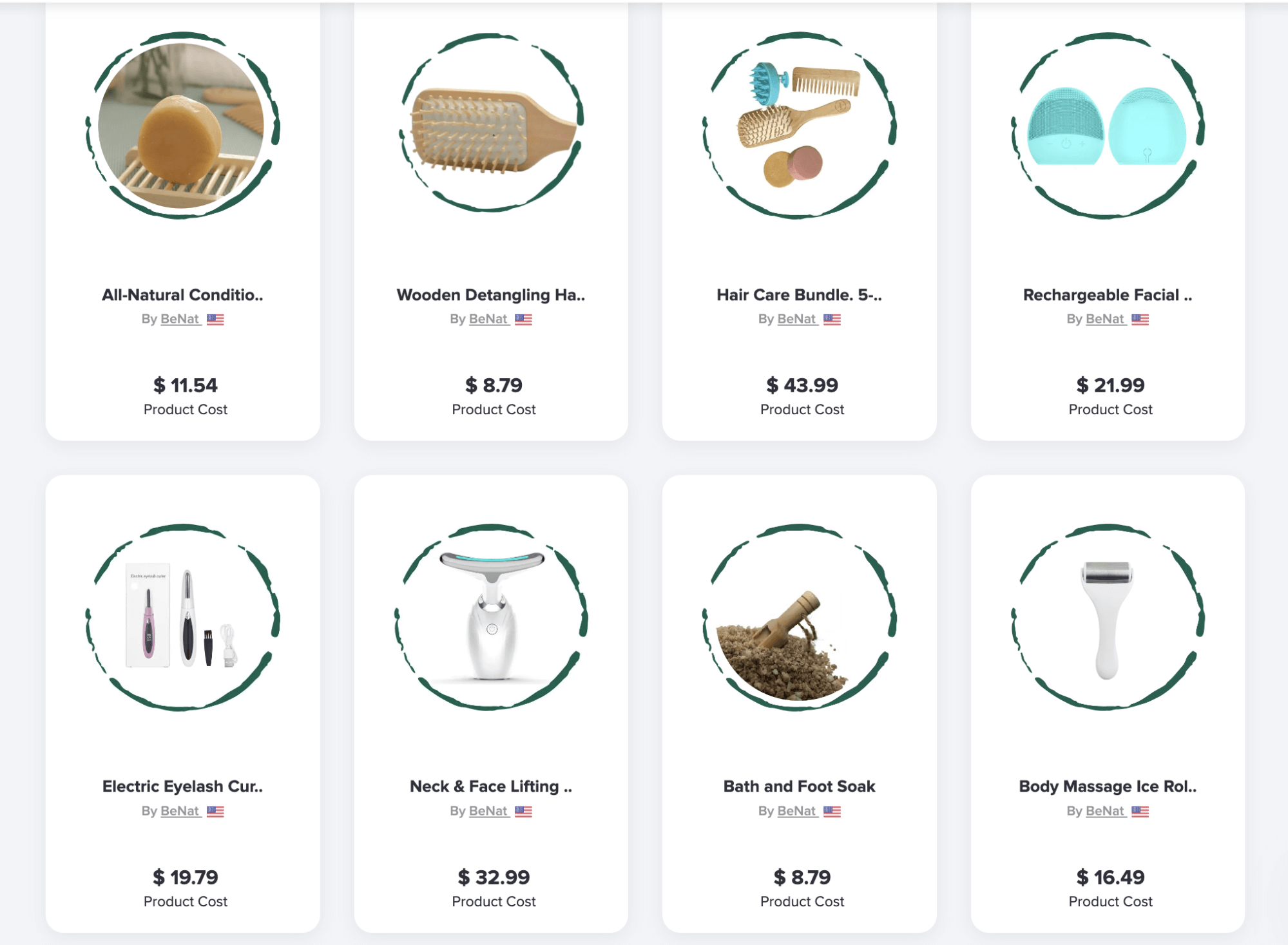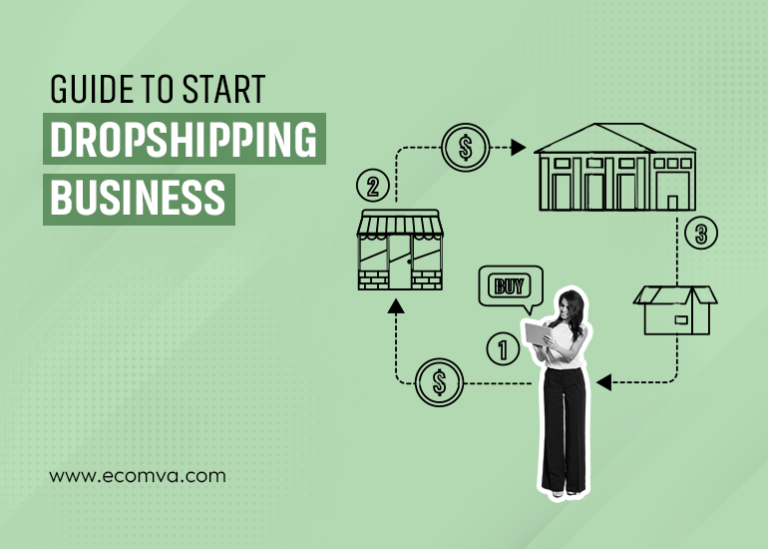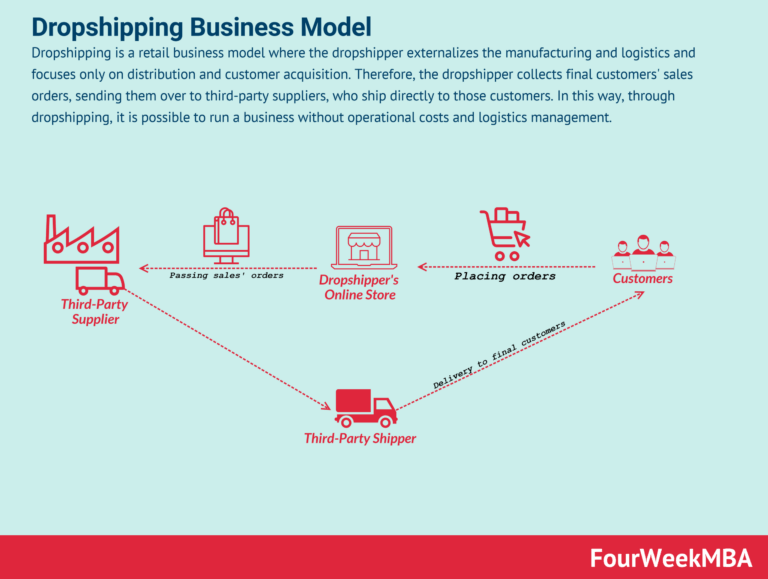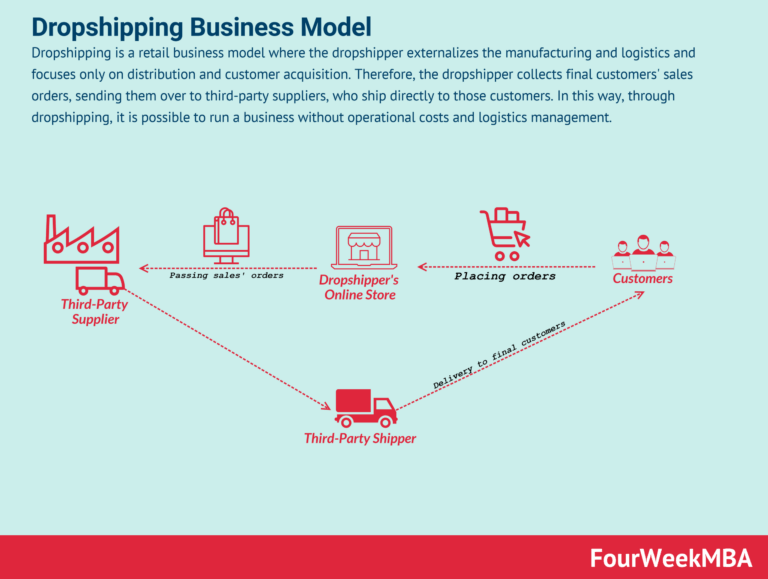What Is Dropshipping and How Does It Work? (2025)
Your Complete Guide to top dropshipping products june 2025
Welcome to Your Entrepreneurial Journey
Congratulations on taking the first step towards starting your own business! If you’re reading this, you’re likely filled with ambition and the desire to carve out your own path in the world of e-commerce. The good news is that launching a dropshipping business is an accessible way to turn your entrepreneurial dreams into reality.
But what exactly is dropshipping? In its simplest form, dropshipping is a retail fulfillment method where you, the seller, don’t hold any inventory. Instead, when a customer makes a purchase, you buy the item from a third party—usually a wholesaler or manufacturer—who then ships it directly to the customer. This model eliminates the need for upfront inventory investment, making it an attractive option for aspiring entrepreneurs looking to minimize startup costs.
One of the most significant advantages of dropshipping is its flexibility. You can run your business from anywhere with an internet connection, allowing you to balance your work with other life commitments. Whether you’re a stay-at-home parent, a full-time employee, or a student, dropshipping offers the freedom to manage your time effectively while building a brand you’re passionate about.
In this guide, we’ll provide you with a complete roadmap to navigating the world of dropshipping in June 2025. You’ll discover how to identify trending products that resonate with consumers, understand the nuances of niche marketing, and effectively reach your target audience. We’ll break down the essential steps from selecting the right products to setting up your online store, and ultimately, making your first sale.
We’ll also delve into the top dropshipping product categories for 2025, including apparel, beauty and personal care, kitchen and dining, baby products, pet supplies, home décor, office supplies, tools, and phone accessories. Each category presents unique opportunities and insights that can help you make informed decisions about your product offerings.
As you embark on this exciting venture, remember that every successful entrepreneur started somewhere. With determination, research, and the actionable insights provided in this guide, you’re well on your way to transforming your dreams into a profitable reality. Let’s dive in and take the first steps towards your successful dropshipping business!
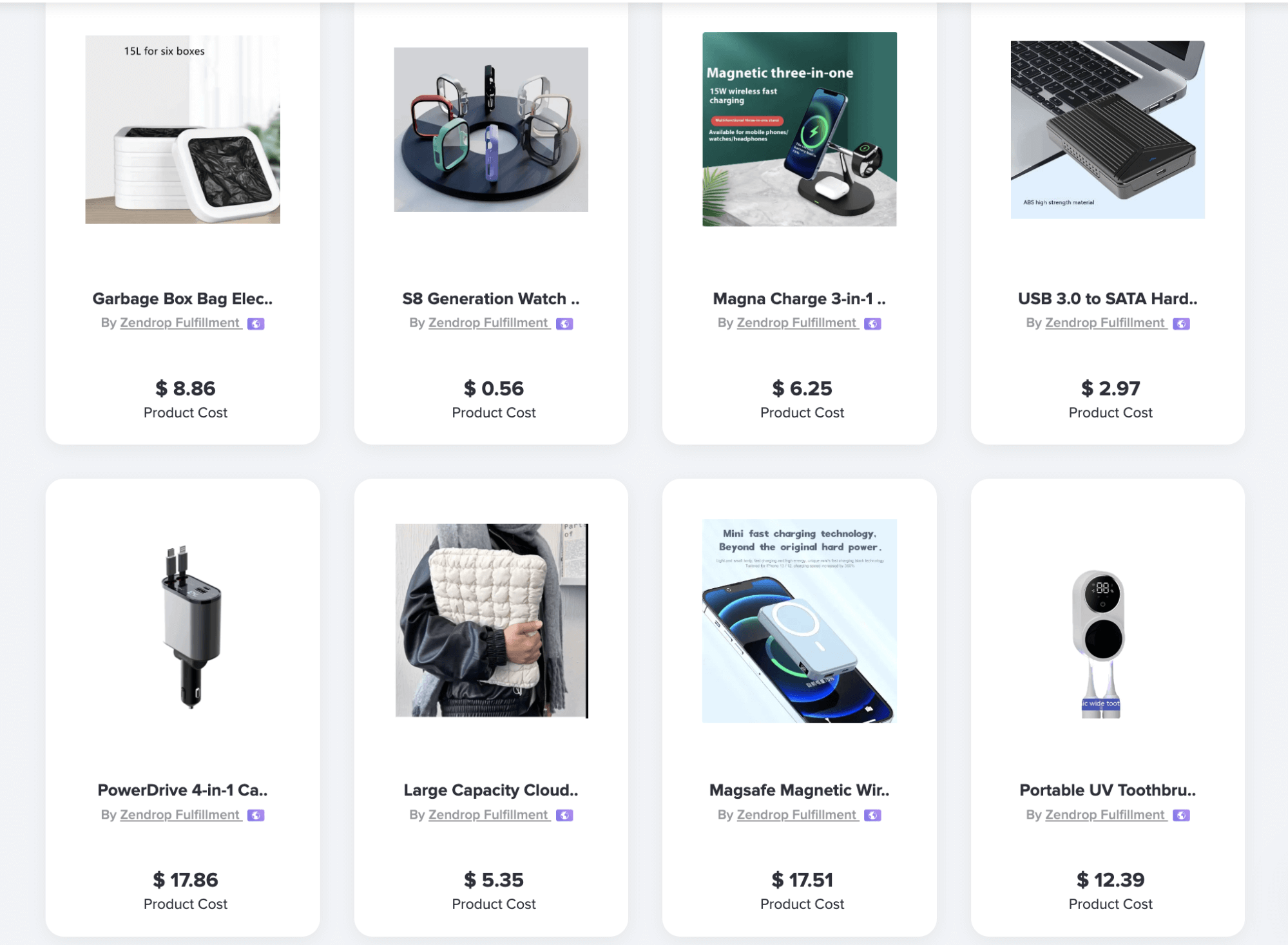
What You’ll Learn In This Guide
- Your Complete Guide to top dropshipping products june 2025
- How Does Dropshipping Actually Work? A Step-by-Step Breakdown
- The Pros and Cons of Dropshipping: Is It Right for You?
- Step 1: Finding a Profitable Niche and Winning Products
- Step 2: Choosing the Right Dropshipping Suppliers
- Step 3: Building Your Online Store
- Step 4: Marketing Your Dropshipping Business to Get Sales
- Common Mistakes to Avoid as a Beginner
- Frequently Asked Questions (FAQs) about top dropshipping products june 2025
- Conclusion: Your Next Steps to Launching Your Business
- Important Disclaimer
How Does Dropshipping Actually Work? A Step-by-Step Breakdown
Understanding the Dropshipping Model: A Step-by-Step Guide
If you’re considering starting a dropshipping business, it’s essential to grasp how the model operates. Think of yourself as the digital storefront—a bridge between customers and suppliers. Here’s a clear, step-by-step breakdown of how dropshipping works, making it easy for you to visualize the flow of both money and goods.
1. Customer Places an Order on Your Online Store
The process begins when a customer visits your online store and decides to make a purchase. This could be anything from a trendy t-shirt to a high-tech kitchen gadget. The moment they click “buy,” an order is generated in your system.
Actionable Tip: Ensure your website is user-friendly and optimized for conversions. High-quality product images, clear descriptions, and easy navigation can help increase sales.
2. You Receive the Payment
Once the customer completes their order, the payment is processed through your chosen payment gateway (like PayPal, Stripe, etc.). You now have the funds from the sale, minus any transaction fees. This initial payment is crucial as it enables you to pay your supplier for the product.
Actionable Tip: Choose reliable payment processing options to enhance customer trust and streamline transactions. Transparency in pricing is key—make sure customers are aware of shipping costs and delivery times.
3. You Forward the Order to Your Supplier
After receiving the payment, your next step is to forward the order details to your dropshipping supplier. This can often be done through an automated system, allowing you to send the order with just a few clicks. You’ll provide the supplier with the customer’s shipping information so they know where to send the product.
Actionable Tip: Build strong relationships with your suppliers. Research and choose suppliers with a good reputation for reliability and quality. This will help ensure a smooth transaction process and maintain customer satisfaction.
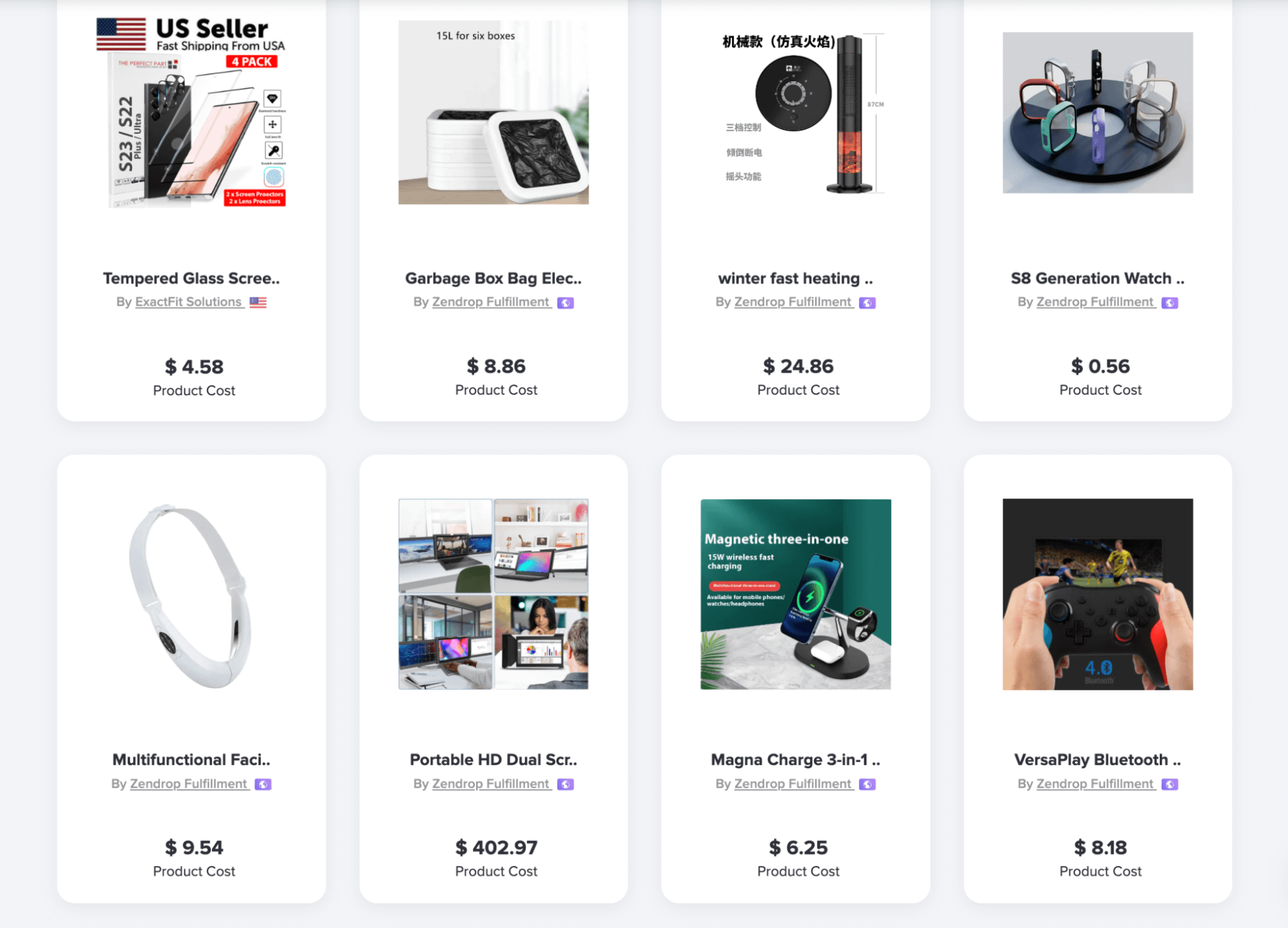
4. The Supplier Ships the Product Directly to the Customer
Once your supplier receives the order, they package the product and ship it directly to your customer. This means you don’t have to handle inventory or shipping logistics, which is one of the biggest advantages of the dropshipping model.
Actionable Tip: Keep your customers informed! Send them tracking information as soon as it’s available, and consider setting up automated emails to update them on their order status. Good communication can enhance customer satisfaction and reduce inquiries about order status.
The Flow of Money and Goods
In a dropshipping model, the flow of money and goods is straightforward:
-
Money Flow: The customer pays you for the product. After deducting your profit margin and any transaction fees, you send the order total to your supplier.
-
Goods Flow: The supplier packages and ships the product directly to the customer’s address. You never physically handle the product, which simplifies your operations.
An Analogy for Clarity
Imagine you are a restaurant owner (your online store) who doesn’t cook the food (the products). Instead, when a customer orders a dish, you call a nearby restaurant (the supplier) to prepare the meal. The restaurant then delivers the meal directly to your customer. You collect the payment from the customer, pay the restaurant for the meal, and keep the difference as profit. This model allows you to offer a diverse menu without needing a kitchen!
Final Thoughts
The dropshipping model offers a low-risk entry point into the world of e-commerce. By understanding each step in the process, you can effectively manage your online store and focus on marketing and customer service. Stay proactive in your operations, and you’ll be on your way to building a successful dropshipping business. Remember, the key to success lies in choosing the right products, establishing strong supplier relationships, and providing excellent customer service. Happy selling!
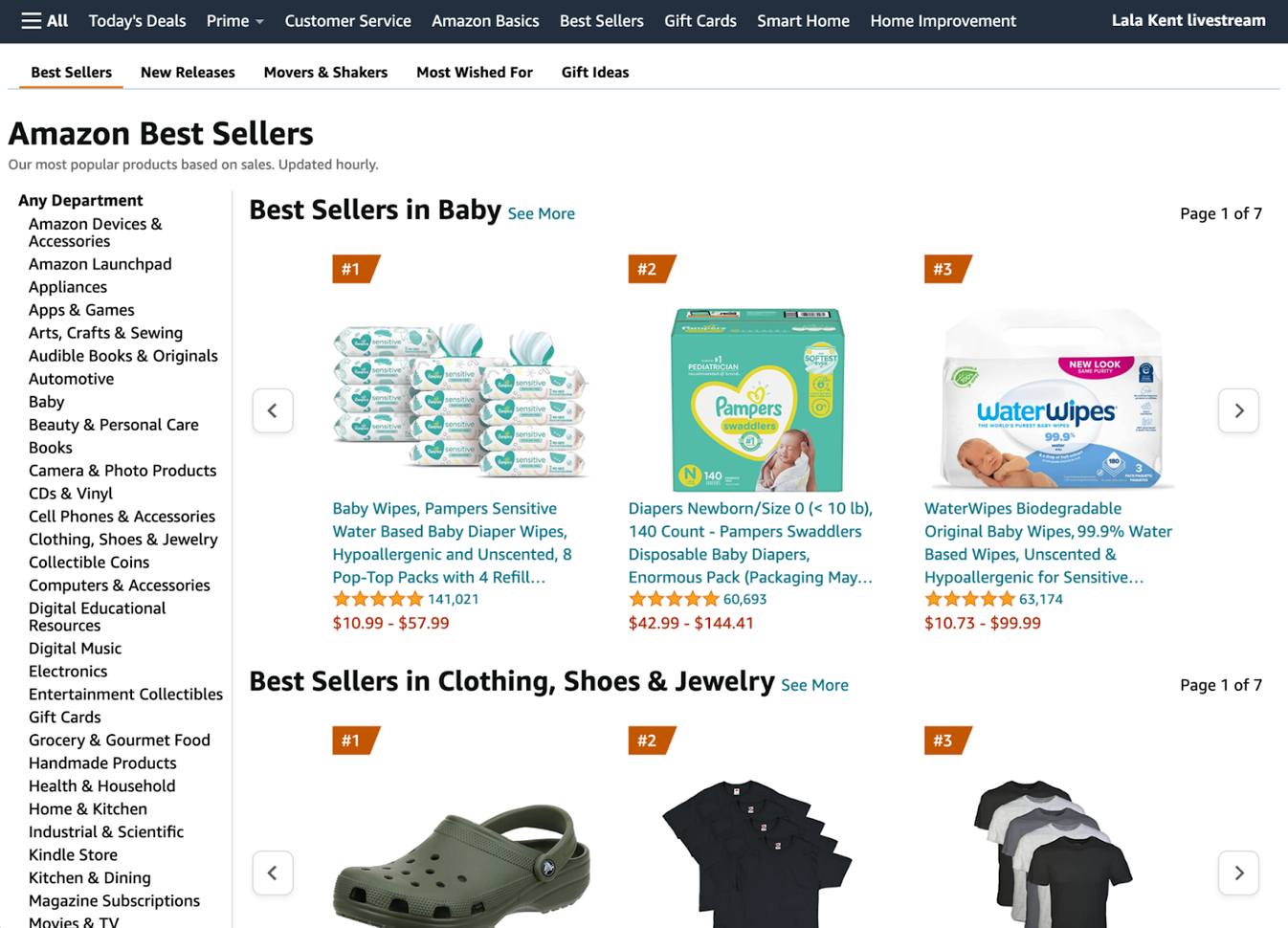
The Pros and Cons of Dropshipping: Is It Right for You?
Advantages of Dropshipping (Pros) | Challenges of Dropshipping (Cons)
|——————————————|———————————————|
| 1. Low Financial Risk | 1. Low Profit Margins |
| No need to invest heavily in inventory, reducing upfront costs. | Profit margins can be slim, often ranging from 10% to 30%. |
| 2. Wide Product Selection | 2. High Competition |
| Ability to offer a diverse range of products without stocking them. | Many entrepreneurs enter the same popular niches, making it hard to stand out. |
| 3. Flexibility and Scalability | 3. Supplier Reliability Issues |
| Easily scale your business without worrying about inventory management. | Dependence on suppliers for product quality and shipping can lead to issues. |
| 4. Location Independence | 4. Limited Control Over Branding |
| Run your business from anywhere with internet access. | Branding options may be limited, as products are sourced from suppliers. |
| 5. Easy to Get Started | 5. Customer Service Challenges |
| Simple setup process; many platforms support dropshipping models. | Handling returns and customer inquiries can be complex and time-consuming. |
| 6. Access to Market Trends | 6. Potential for High Returns |
| Quickly adapt to market trends and consumer demands. | Products may be returned frequently, impacting profitability. |
| 7. Minimal Overhead Costs | 7. Shipping Complexities |
| Low operational costs since you don’t manage inventory or warehousing. | Managing shipping times and costs can be complicated, especially with multiple suppliers. |
Analyzing the Pros of Dropshipping
One of the most significant advantages of dropshipping is the low financial risk involved. For beginners, this model allows you to enter the e-commerce space without the burden of purchasing inventory upfront. You can create a store, list products, and only pay for items once you’ve made a sale. This approach minimizes the risk of being left with unsold inventory, which is a common issue in traditional retail.
Another compelling benefit is the wide product selection available to dropshippers. With access to thousands of products across various categories, you can test different niches to find what resonates with your target audience. This flexibility enables you to pivot quickly based on market trends, ensuring that your store remains relevant and appealing to consumers.
Moreover, dropshipping offers location independence. You can manage your business from anywhere in the world as long as you have a reliable internet connection. This aspect is particularly appealing for aspiring entrepreneurs who value the freedom to travel or work remotely.
The dropshipping model is also incredibly scalable. As your business grows, you can easily add new products and suppliers without worrying about the logistics of inventory management. This scalability allows you to focus on marketing and customer acquisition, which are critical for long-term success.
Exploring the Cons of Dropshipping
Despite its advantages, dropshipping is not without its challenges. One of the most significant drawbacks is the low profit margins. Many dropshippers find themselves competing on price, which can lead to razor-thin margins. This reality necessitates high sales volumes to achieve significant profits, which can be daunting for newcomers.
High competition is another hurdle in the dropshipping landscape. With the low barrier to entry, many entrepreneurs flock to popular niches, making it difficult to differentiate your brand. Standing out requires innovative marketing strategies, a unique value proposition, and a strong brand identity.

Additionally, supplier reliability is a crucial concern. Since you depend on third-party suppliers for product quality and shipping times, any delays or errors on their part can reflect poorly on your business. This lack of control can lead to customer dissatisfaction, which can hurt your reputation and sales.
Customer service can also pose challenges in dropshipping. Handling returns and inquiries can be complex, especially when dealing with multiple suppliers. A delayed response or a mishandled return can lead to negative reviews, impacting your overall business performance.
Finally, managing shipping complexities can be tricky, particularly if you work with various suppliers. Each supplier may have different shipping rates, times, and policies, making it challenging to offer a consistent customer experience. These complexities can lead to confusion and dissatisfaction among your customers, ultimately affecting your bottom line.
Conclusion
In conclusion, dropshipping presents both significant opportunities and notable challenges. By understanding the pros and cons, aspiring entrepreneurs can make informed decisions about whether this business model aligns with their goals and capabilities. With careful planning, strategic marketing, and a focus on customer service, you can navigate the complexities of dropshipping and build a successful online business.
Step 1: Finding a Profitable Niche and Winning Products
What Makes a Good Niche?
Choosing the right niche is one of the most critical steps in your dropshipping journey. A good niche should have the following characteristics:
-
Demand: There should be a consistent and growing demand for products within your niche. Use tools like Google Trends, Keyword Planner, and social media insights to gauge interest.
-
Passion and Knowledge: Ideally, you should be passionate about and knowledgeable in your chosen niche. This will not only make the work more enjoyable but also help you create authentic marketing content.
-
Profitability: Look for niches where the average order value is high enough to allow for a reasonable profit margin after considering shipping, advertising, and operational costs. Aim for products that can be marked up significantly without losing demand.
-
Competition: While some competition indicates a healthy market, avoid overly saturated niches. Look for unique angles or sub-niches that can differentiate your business.
-
Sustainability: Choose niches that are not just trends but have longevity. For instance, while fads like fidget spinners may generate quick sales, they won’t sustain your business long-term.
How to Brainstorm Niche Ideas
Once you understand what makes a good niche, it’s time to brainstorm. Here are some effective methods to generate niche ideas:
-
Personal Interests and Hobbies: List your hobbies and interests. This can provide a solid foundation for a niche that you will enjoy working in. For example, if you love cooking, consider a niche in kitchen gadgets.
-
Marketplaces and E-commerce Platforms: Browse popular platforms like Amazon, eBay, and Etsy. Look for best-selling items, customer reviews, and frequently asked questions to identify gaps in the market.
-
Social Media and Trend Analysis: Use platforms like Instagram, TikTok, and Pinterest to explore trending topics and products. Tools like BuzzSumo can help you analyze what content is resonating with audiences.
-
Forums and Community Groups: Visit online forums, Reddit threads, and Facebook groups related to your interests. Pay attention to common questions, frustrations, and product requests.
-
Surveys and Polls: If you have an existing audience (like on social media), conduct surveys to understand their needs and preferences. This direct feedback can be invaluable for pinpointing a niche.
Validating Your Niche
Before fully committing to a niche, it’s crucial to validate your idea. Here are steps to ensure your niche has potential:
-
Keyword Research: Use tools like Google Keyword Planner or Ubersuggest to analyze search volume and competition for your niche-related keywords. Look for keywords with a reasonable search volume but low competition.
-
Competitor Analysis: Research competitors in your niche. Identify their strengths and weaknesses. Tools like SEMrush or Ahrefs can provide insights into their traffic sources, popular products, and marketing strategies.
-
Customer Feedback: Read customer reviews on platforms like Amazon or social media to understand pain points and desires in your niche. This feedback can inform your product selection and marketing approach.
-
Test Marketing: Create a landing page with a sign-up form for potential customers to express interest in your niche products. Use social media ads to drive traffic to this page and measure engagement.
-
Pilot Product Launch: Consider launching a small collection of products to test the waters. Monitor sales, customer feedback, and social media engagement to gauge interest before expanding your product range.
Methods for Finding Winning Products
Once you’ve validated your niche, it’s time to find winning products to sell. Here are effective methods and tools to discover high-potential items:
-
Supplier Marketplaces: Use platforms like AliExpress, Oberlo, and Spocket to explore trending products. These marketplaces often have sections for best-sellers, allowing you to see what’s currently popular.
-
Social Media Trend Tools: Leverage social media tools such as TrendHunter, BuzzSumo, or Google Trends to identify trending products and topics. You can filter by categories relevant to your niche.
-
Criteria for a Good Dropshipping Product:
- Price Point: Aim for products that can be sold between $20 and $100. This range typically offers a good balance between affordability for customers and profitability for you.
- Not Easily Found in Stores: Look for unique items that customers may not find in their local retail stores. This creates a sense of exclusivity and can drive sales.
-
Problem Solvers: Choose products that address specific problems or pain points. This can include items that save time, improve convenience, or enhance lifestyle.
-
Customer Reviews and Feedback: Analyze customer reviews on existing products in your niche to determine what features customers love or dislike. This information can guide your product selection and marketing messaging.
-
Seasonal and Trend-Based Products: Keep an eye on seasonal trends or upcoming holidays. Products that align with these events can see a spike in sales. Utilize tools like Google Trends to identify these seasonal spikes.
-
Influencer Partnerships: Collaborate with influencers in your niche to get insights into what products resonate with their audience. Influencers often have their fingers on the pulse of emerging trends.
-
Product Sampling: Order samples of potential products to assess quality and usability. This firsthand experience will help you better market these products and answer customer inquiries.
By following these structured steps, you can confidently navigate the process of finding a profitable niche and winning products for your dropshipping business. Remember, the key is to stay informed, be adaptable, and always prioritize your customers’ needs. Good luck on your entrepreneurial journey!
Step 2: Choosing the Right Dropshipping Suppliers
Understanding Dropshipping Suppliers
Finding the right dropshipping supplier is crucial for the success of your e-commerce business. A reliable supplier can help you maintain high product quality, efficient shipping times, and excellent customer service, which are all vital for building a reputable brand. In this section, we will explore some of the most popular dropshipping platforms, namely AliExpress, CJ Dropshipping, and USA-Based Suppliers. We will discuss their pros and cons, and provide you with a checklist to evaluate potential suppliers effectively.
AliExpress
AliExpress is one of the most widely used platforms for dropshipping. It offers a vast selection of products at competitive prices, making it a popular choice for beginners.
Pros:
- Wide Variety of Products: AliExpress has millions of products across numerous categories, giving you plenty of options to choose from.
- Low Prices: Many suppliers offer products at very low prices, allowing for higher profit margins.
- No Upfront Costs: You can start selling without needing to purchase inventory upfront.
- Integrated with Shopify: AliExpress seamlessly integrates with platforms like Shopify, making it easier to import products and manage your store.
Cons:
- Long Shipping Times: Many suppliers are based in China, which can lead to extended shipping times (often 2-4 weeks).
- Inconsistent Quality: The quality of products can vary widely between suppliers, making it essential to vet them carefully.
- Language Barriers: Communication can sometimes be challenging due to language differences.
CJ Dropshipping
CJ Dropshipping is an increasingly popular alternative to AliExpress. It offers a range of products and fulfillment services tailored specifically for dropshippers.
Pros:
- Faster Shipping: CJ Dropshipping has warehouses in various countries, including the USA, which can significantly reduce shipping times.
- Quality Control: They provide product sourcing and quality control services, ensuring that you receive high-quality products.
- Custom Branding Options: CJ allows you to customize packaging and products, enhancing your brand identity.
- Comprehensive Support: They offer customer support in English, making communication smoother.
Cons:
- Limited Product Range: While they have a good selection, it may not be as extensive as AliExpress.
- Higher Costs: Prices can be higher compared to AliExpress, impacting your profit margins.
- Learning Curve: The platform can be more complex to navigate, especially for beginners.
USA-Based Suppliers
Choosing USA-based suppliers can significantly enhance your dropshipping business, especially if you are targeting customers in the United States.
Pros:
- Faster Shipping: Domestic shipping is typically much faster (usually 3-7 days), improving customer satisfaction.
- Quality Assurance: Many USA-based suppliers maintain higher quality standards, reducing the risk of returns and complaints.
- Better Communication: Working with suppliers in the same time zone can facilitate smoother communication and quicker responses.
Cons:
- Higher Prices: Products from USA-based suppliers can be more expensive, which may reduce your profit margins.
- Limited Selection: The range of products might not be as extensive as international suppliers like AliExpress.
- Fewer Automation Options: Some USA suppliers may not integrate as seamlessly with dropshipping platforms, requiring more manual work.
What to Look for in a Good Supplier
When evaluating potential dropshipping suppliers, consider the following checklist to ensure they meet your business needs:
- Communication: Ensure the supplier is responsive and communicates clearly. A good supplier should answer queries promptly and be easy to reach.
- Shipping Times: Check the estimated shipping times and ensure they align with your customers’ expectations. Fast shipping can be a significant competitive advantage.
- Product Quality: Order samples to assess the quality of products before listing them in your store. Look for suppliers with positive reviews and consistent quality.
- Return Policies: Understand the supplier’s return and refund policies. A clear and fair policy can save you headaches down the line.
- Pricing: Compare prices across multiple suppliers. Ensure you can maintain a healthy profit margin after accounting for shipping and other costs.
- Experience and Reputation: Research the supplier’s history and reputation in the dropshipping community. Look for reviews, testimonials, and ratings.
- Inventory Levels: Choose suppliers who can maintain adequate inventory levels to avoid stockouts and delays.
- Customization Options: If branding is important to you, check if the supplier offers custom packaging or private labeling options.
- Integration Capabilities: Ensure the supplier can integrate with your e-commerce platform (e.g., Shopify, WooCommerce) for seamless order management.
Conclusion
Choosing the right dropshipping supplier is a vital step in your entrepreneurial journey. By carefully evaluating platforms like AliExpress, CJ Dropshipping, and USA-Based Suppliers, you can find a reliable partner that aligns with your business goals. Use the provided checklist to assess potential suppliers and make informed decisions. Remember, the foundation of your dropshipping business lies in the quality of your products and the reliability of your suppliers, so take the time to choose wisely.
By following these guidelines, you’ll be well on your way to establishing a successful dropshipping business with a solid supplier network. Keep learning, stay persistent, and watch your online store thrive!
Step 3: Building Your Online Store
Getting Started with Your Online Store
Building your online store is an exciting step in your dropshipping journey. With platforms like Shopify, setting up a professional-looking store can be done quickly and efficiently, even for beginners. In this guide, we’ll walk you through the essential steps to get your Shopify store up and running smoothly.
1. Choosing a Plan
First things first, you need to select a Shopify plan that fits your business needs. Shopify offers various pricing tiers, starting from a basic plan to more advanced options that include additional features. Here’s a quick overview of what to consider:
- Basic Plan: Ideal for beginners, providing all the essential features to start selling.
- Shopify Plan: Adds more advanced reporting and professional reports, suitable as your business grows.
- Advanced Plan: Best for established businesses needing advanced reporting and lower transaction fees.
You can start with a free trial to explore the platform without any financial commitment. Once you’re ready, select the plan that aligns with your budget and growth expectations.
2. Picking a Theme
Your store’s appearance is crucial for attracting customers. Shopify offers a variety of free and paid themes that can be customized to suit your brand identity. Here’s how to choose the right theme:
- Consider Your Niche: Look for themes that cater to your product category. For instance, if you’re selling beauty products, choose a theme that emphasizes visuals.
- Mobile Responsiveness: Ensure the theme is mobile-friendly, as a significant portion of online shopping occurs on mobile devices.
- Customization Options: Choose a theme that allows you to easily change colors, fonts, and layouts to reflect your brand’s personality.
Once you find a theme you like, you can install it with just a few clicks and start customizing it to fit your brand.
3. Setting Up Essential Pages
Creating essential pages not only enhances your store’s credibility but also helps in building trust with your customers. Here are the key pages to set up:
- About Us: Share your story, mission, and values. This is your chance to connect with customers on a personal level.
- Contact Page: Provide multiple ways for customers to reach you, such as email, phone, and a contact form. Quick responses can significantly improve customer satisfaction.
- Policies: Clearly outline your shipping, return, and privacy policies. Transparency in these areas can reduce disputes and enhance customer trust.
You can create these pages easily in the Shopify dashboard under the “Online Store” section.
4. Installing Key Apps
To maximize your store’s functionality, you’ll want to install key apps that can enhance your dropshipping operations. Here are some essential apps to consider:
- Import Tools: Apps like DSers or CJ Dropshipping make it easy to import products from suppliers directly into your store. They also help manage inventory and order fulfillment.
- Marketing Apps: Consider apps for email marketing (like Klaviyo), social media integration, and SEO optimization to help drive traffic to your store.
- Customer Support Apps: Tools like Tidio or Zendesk can help you manage customer inquiries and improve service efficiency.
Explore the Shopify App Store to find the tools that best suit your business needs.
5. Setting Up Payment Gateways
To start accepting payments, you need to set up payment gateways. Shopify supports various payment options, allowing you to cater to your customers’ preferences. Here’s how to set it up:
- Shopify Payments: This is the easiest option to set up, allowing you to accept credit cards directly. It also provides lower transaction fees.
- Third-Party Payment Providers: If you prefer other payment methods (like PayPal, Stripe, or Authorize.net), you can integrate these as well. Make sure to compare transaction fees and features.
- Currency Options: Consider enabling multiple currencies if you plan to sell internationally, making it easier for customers to purchase from your store.
Exploring Alternatives: WooCommerce
While Shopify is the most popular platform for dropshipping, you might also consider WooCommerce, especially if you prefer more control over your store’s functionality. WooCommerce is a WordPress plugin that allows you to create a fully customizable online store. It offers greater flexibility but requires more technical knowledge to set up and maintain compared to Shopify.
Final Thoughts
Building your online store is a critical step in your dropshipping journey, and with Shopify, it can be a seamless experience. Remember to take your time during the setup process, ensuring that each element reflects your brand and caters to your target audience. By following these steps, you’ll be well on your way to launching a successful online store that can grow and thrive in the competitive e-commerce landscape. Embrace the journey, and don’t hesitate to seek help or resources as you progress!
Step 4: Marketing Your Dropshipping Business to Get Sales
Social Media Marketing (TikTok & Instagram)
Social media platforms like TikTok and Instagram are powerful tools for dropshipping entrepreneurs. They allow you to showcase products visually and engage with potential customers. Here are some actionable strategies to leverage these platforms effectively:
- Create Engaging Content:
- Product Demos: Share short videos demonstrating how your products work. For instance, if you sell kitchen gadgets, create quick recipe videos using those gadgets. This not only showcases the product but also provides value to your audience.
- Before-and-After Transformations: If you sell beauty products, show real-life results. For example, use a skincare product on one side of your face and share the results after a few days.
-
User-Generated Content: Encourage customers to share their experiences with your products. Repost these testimonials on your account. This builds trust and provides social proof.
-
Utilize Influencer Collaborations:
- Find Relevant Influencers: Look for micro-influencers in your niche. They often have a highly engaged audience and are more cost-effective than larger influencers. For instance, if you’re selling pet supplies, collaborate with pet influencers who can showcase your products in action.
-
Product Giveaways: Partner with influencers to host giveaways. This can increase your visibility and attract new followers. Ensure participants follow your account and tag friends for entries, which can further expand your reach.
-
Leverage Hashtags and Trends:
- Use Niche-Specific Hashtags: Research and use hashtags that your target audience follows. For example, #EcoFriendlyProducts for sustainable goods or #HomeDecor for interior items.
- Participate in Trending Challenges: TikTok is famous for its challenges. Create content that aligns with these trends while subtly promoting your products. This can significantly increase your visibility and engagement.
Paid Advertising (Facebook/Instagram Ads)
Paid advertising is a quick way to drive traffic to your dropshipping store. Facebook and Instagram ads allow for precise targeting, making it easier to reach your ideal customers. Here are some tips to get started:
- Define Your Target Audience:
- Use Facebook Audience Insights: This tool helps you understand your audience’s demographics, interests, and behaviors. Use this information to create targeted ads that resonate with your potential customers.
-
Create Custom Audiences: Upload your email list to Facebook to target existing customers or retarget website visitors who didn’t make a purchase.
-
Create Eye-Catching Ad Creatives:
- High-Quality Images or Videos: Use clear, vibrant images or videos that showcase your products. For example, if you’re selling fashion items, consider a carousel ad that highlights different outfits.
-
Compelling Copy: Write concise and persuasive ad copy. Highlight the benefits of your product and include a clear call-to-action (CTA), such as “Shop Now” or “Limited Time Offer.”
-
A/B Test Your Ads:
- Experiment with Different Variations: Test different headlines, images, and CTAs to see what resonates best with your audience. For example, try running two versions of an ad with different images to see which one performs better.
- Monitor Performance Metrics: Keep track of key metrics like click-through rates (CTR) and conversion rates. Use this data to refine your advertising strategy continually.
Search Engine Optimization (SEO)
SEO is crucial for long-term visibility and traffic to your dropshipping store. By optimizing your website and content, you can attract organic traffic without relying solely on paid ads. Here’s how to get started:
- Conduct Keyword Research:
- Use Tools like Google Keyword Planner: Identify keywords related to your products. For instance, if you sell eco-friendly kitchen products, target keywords like “sustainable kitchenware” or “biodegradable utensils.”
-
Focus on Long-Tail Keywords: These are more specific phrases that may have lower search volume but higher conversion rates. For example, “best reusable water bottles for kids” instead of just “water bottles.”
-
Optimize Your Product Pages:
- Use Keywords in Titles and Descriptions: Ensure your primary keyword appears in the product title, description, and URL. This helps search engines understand what your page is about.
-
High-Quality Images with Alt Text: Use descriptive alt text for images to improve accessibility and SEO. For example, instead of “image1.jpg,” use “eco-friendly-bamboo-cutting-board.jpg.”
-
Create Valuable Content:
- Start a Blog: Share informative articles related to your niche. If you sell pet products, write about pet care tips or product reviews. This can attract traffic and position you as an authority in your niche.
- Use Internal Linking: Link related products or blog posts within your site. This not only helps with SEO but also encourages visitors to explore more of your site.
Email Marketing
Email marketing is a powerful tool for nurturing leads and driving sales. By building an email list, you can communicate directly with potential and existing customers. Here are some tips to effectively use email marketing:
- Build Your Email List:
- Offer Incentives: Create a lead magnet, such as a discount code or a free e-book related to your products, to encourage sign-ups. For example, offer 10% off for first-time subscribers.
-
Use Pop-Up Forms: Integrate pop-up forms on your website to capture visitor emails. Ensure the forms are easy to dismiss to avoid frustrating users.
-
Segment Your Audience:
- Create Targeted Lists: Segment your email list based on customer behavior, such as past purchases or browsing history. This allows you to send personalized content, increasing engagement and conversion rates.
-
Send Personalized Recommendations: Use customer data to recommend products based on previous purchases. For instance, if a customer bought a yoga mat, suggest matching accessories like yoga blocks or straps.
-
Craft Compelling Email Campaigns:
- Write Attention-Grabbing Subject Lines: Your subject line is the first thing subscribers see. Make it enticing to improve open rates. For example, “Unlock 20% Off Your Next Purchase!” is more appealing than just “Sale.”
- Include Clear CTAs: Every email should have a clear action you want the reader to take, whether visiting your site or making a purchase. Use buttons like “Shop Now” or “Explore New Arrivals” to guide them.
By implementing these marketing strategies, you can effectively promote your dropshipping business and drive sales. Remember, consistency is key, and adapting your strategies based on performance data will help you achieve your business goals. Stay focused, keep learning, and don’t hesitate to experiment with new ideas!
Common Mistakes to Avoid as a Beginner
1. Choosing a Bad Niche
One of the most significant mistakes beginners make is selecting a niche that is either oversaturated or has low demand. A poorly chosen niche can lead to minimal sales and increased competition.
Solution: Conduct thorough market research before settling on a niche. Utilize tools like Google Trends, social media insights, and keyword research to identify products that are in demand. Consider niches that resonate with your interests or passions, as this will make marketing easier and more authentic.
2. Not Testing Products
Many new dropshippers jump straight into selling products without testing their quality or marketability. This can lead to high return rates, poor customer satisfaction, and damage to your brand’s reputation.
Solution: Order samples of the products you plan to sell. This not only allows you to assess quality but also gives you the opportunity to create authentic marketing content. Additionally, consider running small test campaigns to gauge interest before fully committing to a product.
3. Poor Customer Service
Neglecting customer service is a common pitfall for beginners. Unsatisfactory customer experiences can result in negative reviews and lost sales, which can be detrimental to your business growth.
Solution: Prioritize customer service from the start. Set up a clear communication channel, respond promptly to inquiries, and handle complaints with empathy. Consider automating responses for common questions but ensure there’s always a personal touch when needed.
4. Ignoring Shipping Times
Long or unclear shipping times can frustrate customers and lead to cart abandonment. Many beginners underestimate the importance of transparency regarding delivery expectations.
Solution: Clearly communicate shipping times on your website and during the checkout process. Partner with suppliers who offer reliable and timely shipping. Consider utilizing ePacket shipping for international orders, as it provides a good balance between speed and cost.
5. Unrealistic Profit Expectations
New dropshippers often enter the business with inflated expectations regarding profit margins. They may overlook costs like advertising, platform fees, and returns, leading to disappointment when profits are lower than anticipated.
Solution: Create a detailed budget that accounts for all expenses associated with your dropshipping business. Understand your margins and set realistic sales goals. Regularly review your financials and adjust your strategies as needed.
6. Failing to Build a Brand
Many beginners focus solely on selling products without establishing a recognizable brand. This lack of branding can make it hard to differentiate yourself from competitors.
Solution: Invest time in creating a unique brand identity, including a professional logo, a cohesive color scheme, and a compelling brand story. Consistently apply this branding across your website, social media, and marketing materials to build recognition and trust.
7. Overlooking Marketing Strategies
Relying solely on organic traffic or word-of-mouth can severely limit your reach. Many beginners fail to explore effective marketing strategies, which can lead to slow sales growth.
Solution: Develop a comprehensive marketing plan that includes social media marketing, influencer partnerships, email marketing, and search engine optimization (SEO). Experiment with paid advertising on platforms like Facebook and Instagram to reach a wider audience.
8. Not Utilizing Analytics
Beginners often overlook the importance of data analytics, which can provide crucial insights into customer behavior and sales performance. Without this information, it’s challenging to make informed business decisions.
Solution: Use analytics tools available on your e-commerce platform to track metrics such as traffic, conversion rates, and customer demographics. Regularly review this data to identify trends, optimize your product offerings, and adjust your marketing strategies.
9. Skipping Legal Considerations
Many aspiring dropshippers neglect the legal aspects of running a business, which can lead to compliance issues and costly penalties down the line.
Solution: Research the legal requirements for starting a dropshipping business in your region, including business licenses, sales tax obligations, and consumer protection laws. Consult with a legal professional if necessary to ensure compliance.
10. Not Networking or Seeking Guidance
Lastly, many beginners attempt to navigate the dropshipping landscape alone, missing out on valuable insights and support from experienced entrepreneurs.
Solution: Join online communities, forums, or social media groups focused on dropshipping. Networking with other dropshippers can provide you with tips, resources, and potential collaboration opportunities. Consider finding a mentor who can guide you through the initial stages of your business.
By being aware of these common mistakes and implementing the suggested solutions, you can set yourself up for a successful dropshipping journey. Remember, every entrepreneur faces challenges, but learning from mistakes is key to growth and success.
Frequently Asked Questions (FAQs) about top dropshipping products june 2025
1. What are the top dropshipping products to sell in June 2025?
In June 2025, some of the most sought-after dropshipping products include apparel like basic t-shirts and yoga pants, beauty items such as hydrocolloid pimple patches and cruelty-free mascara, kitchen gadgets like stainless steel tumblers, and essential baby products like organic baby clothing and teething toys. Additionally, pet supplies, home décor items, office products, and tools for home improvement are also trending. The key is to focus on in-demand categories that resonate with current consumer interests.
2. How do I choose the right dropshipping products for my store?
Choosing the right products involves research and understanding market trends. Start by analyzing popular categories like apparel, beauty, and home goods. Use tools like Google Trends or social media platforms to gauge interest and demand. Additionally, consider your target audience’s preferences and pain points. Test a few products initially to see what resonates best with your customers, and refine your offerings based on their feedback and purchasing behavior.
3. How much money do I need to start a dropshipping business?
The initial investment for a dropshipping business can be relatively low, typically ranging from $200 to $2,000. This includes costs for setting up your e-commerce website (hosting, domain, and platform fees), initial marketing efforts (like ads and social media), and possibly purchasing a few sample products for quality assurance. The beauty of dropshipping is that you don’t need to hold inventory, which significantly reduces upfront costs.
4. Do I need to register a company to start dropshipping?
While it’s not mandatory to register a company to start dropshipping, it’s highly recommended. Registering your business provides legal protection, allows you to open a business bank account, and can enhance your credibility with suppliers and customers. Depending on your location, you may need to obtain a business license or permit. Always check local regulations to ensure compliance.
5. How do I handle returns and refunds in a dropshipping business?
Handling returns and refunds effectively is crucial for maintaining customer satisfaction. Start by clearly outlining your return policy on your website. Coordinate with your suppliers to understand their return processes and any associated fees. When a customer initiates a return, guide them through the process and ensure they feel supported. Good communication and a streamlined return process can turn a potentially negative experience into a positive one.
6. What platforms are best for starting a dropshipping business?
Popular platforms for dropshipping include Shopify, WooCommerce, and BigCommerce. Shopify is known for its user-friendly interface and extensive app ecosystem, making it ideal for beginners. WooCommerce, on the other hand, is a great option if you prefer more customization and control over your website. Consider your technical skills, budget, and the specific features you need when choosing a platform.
7. How do I market my dropshipping products effectively?
Effective marketing strategies include leveraging social media platforms, creating engaging content, and utilizing email marketing. Consider running targeted ads on platforms like Facebook and Instagram to reach your ideal customers. Influencer collaborations can also boost visibility and credibility. Additionally, focus on search engine optimization (SEO) for your website to attract organic traffic. Building an email list allows you to nurture leads and promote special offers directly to interested customers.
8. Is it necessary to use social media for my dropshipping business?
While not strictly necessary, using social media is highly beneficial for dropshipping businesses. It helps increase brand awareness, engage with your audience, and drive traffic to your store. Platforms like Instagram and TikTok are particularly effective for showcasing products through engaging visuals and videos. Building a community around your brand can lead to loyal customers and organic growth.
9. What are the common challenges in dropshipping, and how can I overcome them?
Common challenges in dropshipping include supplier reliability, shipping times, and competition. To overcome these, build strong relationships with reliable suppliers and regularly communicate with them. Always provide transparent shipping information to your customers to manage expectations. Research your competitors to identify gaps in the market that you can fill, and focus on providing exceptional customer service to differentiate your business.
10. Can I start dropshipping without prior experience?
Absolutely! Many successful dropshippers started without any prior experience. The key is to educate yourself about the industry, learn from online resources, and start small. Utilize online courses, blogs, and forums to gather knowledge. By taking a step-by-step approach and being willing to adapt and learn from your experiences, you can build a successful dropshipping business over time.
Conclusion: Your Next Steps to Launching Your Business
Getting Started on Your Dropshipping Journey
Embarking on a dropshipping venture is an exciting opportunity to build your own business with minimal upfront investment. However, it’s crucial to recognize that success in this field requires dedication, learning, and strategic planning. Here’s a concise roadmap to guide you through the initial steps of launching your dropshipping business:
-
Choose Your Niche: Start by selecting a niche that not only interests you but also has a proven market demand. Utilize resources like trending product lists to identify categories such as apparel, beauty, kitchen supplies, or pet products that resonate with your target audience.
-
Research Suppliers: Find reliable suppliers who offer quality products and favorable shipping terms. Platforms like Shopify and AliExpress can connect you with numerous suppliers, but be sure to read reviews and order samples to ensure product quality.
-
Set Up Your Online Store: Create an engaging and user-friendly online store using e-commerce platforms like Shopify or WooCommerce. Invest time in optimizing your store’s design, product descriptions, and images to enhance customer experience.
-
Develop a Marketing Strategy: Craft a marketing plan that includes social media promotion, email marketing, and search engine optimization (SEO). Leverage platforms like Instagram and TikTok to showcase your products and engage with potential customers.
-
Launch and Monitor: Once your store is live, keep a close eye on your sales, customer feedback, and website analytics. Use this data to refine your strategies, improve your product offerings, and adapt to market trends.
Remember, dropshipping is not a get-rich-quick scheme. It’s a legitimate business that demands commitment and continuous learning. By following these steps and remaining persistent, you can build a sustainable online business that meets the needs of your customers.
Take Action Today!
The journey of a thousand miles begins with a single step. Don’t let uncertainty hold you back—take that first step towards launching your dropshipping business today! Research your niche, identify potential products, and start crafting your business vision. Your future as a successful entrepreneur begins now!
Important Disclaimer
⚠️ Important Disclaimer
The information provided in this guide is for educational purposes only. Starting a business involves risks, and success is not guaranteed. Please conduct your own thorough research and consider consulting with financial and legal professionals before making any business decisions.
